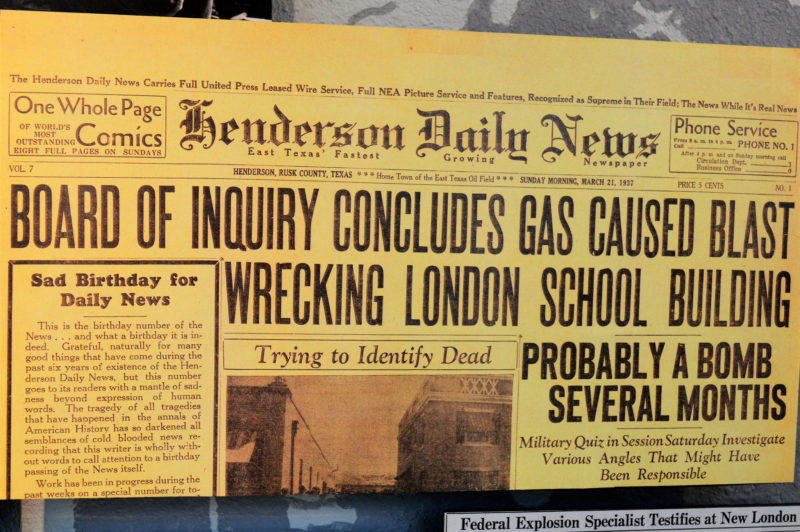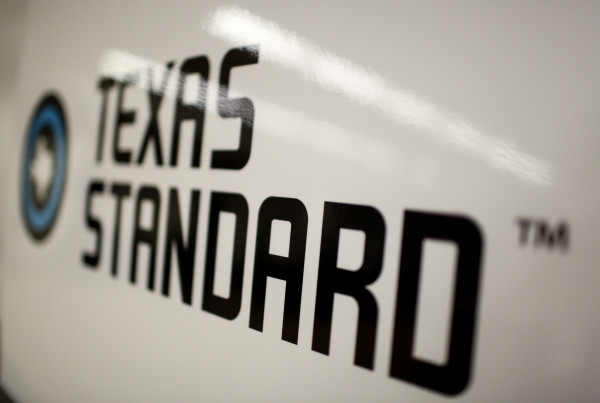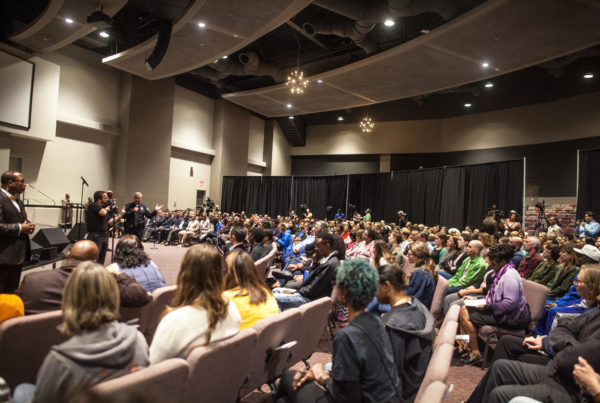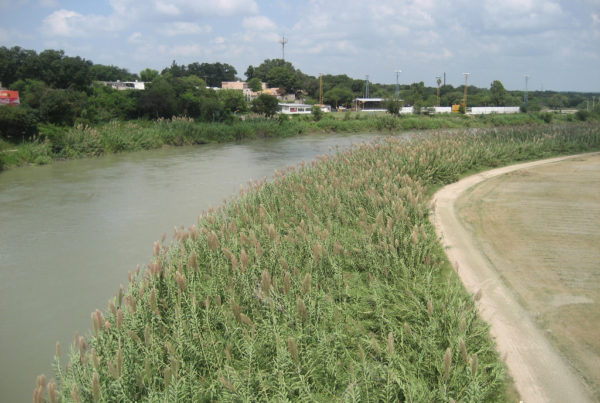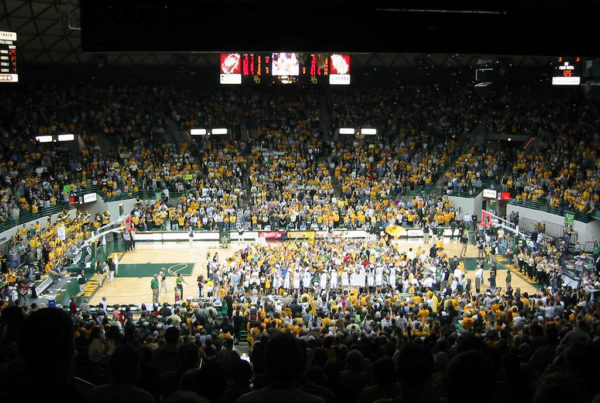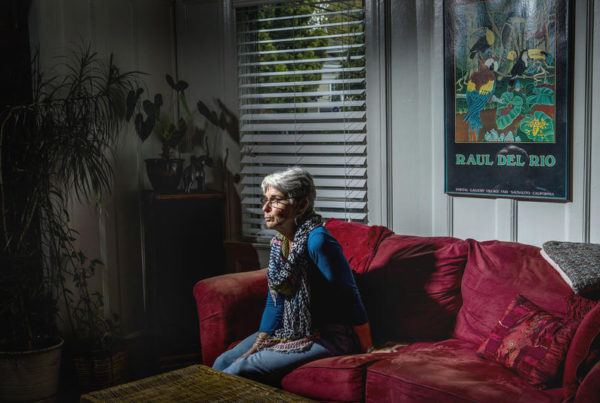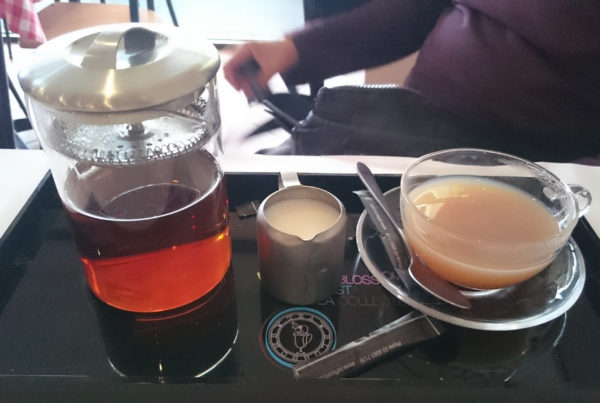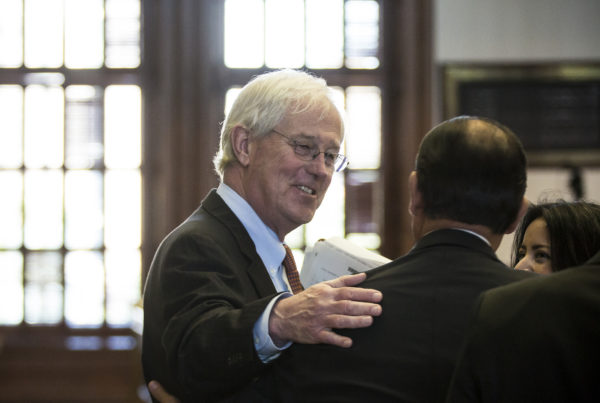Last month, a gas explosion in Dallas killed a 12-year old girl and brought new attention to an aging infrastructure. The natural gas supplier Atmos Energy says it’s upgrading old steel pipes in the area, but many wonder why it took a deadly explosion to draw attention to the issue in the first place.
But it’s far from the first time that a tragedy caused by a gas explosion has moved the industry to make changes. In fact, this Sunday marks 81 years since a natural gas accident that was so devastating that it led to changes on a national scale – changes we live with today.
The East Texas city of New London was one of the wealthiest places in America, with one of the fanciest school buildings of its time. But on March 18, 1937, a natural gas leak caused an explosion at the school that collapsed much of the building and killed 294 people, mostly school kids.
John Davidson, head docent of the New London Museum, is trying to make sure people don’t forget. His sister Ardyth Davidson, who was 14 years old at the time, was killed in the explosion. Ironically, he says that had it not been for the tragedy, he probably wouldn’t have been born.
“I was born three years later,” Davidson says. “My mom and dad were approaching 40 years and she was their only child, and they weren’t planning to have more children. So I came along three years later.”
Davidson grew up in New London. He graduated from London High School and then from Sam Houston University. He worked for Kelly-Springfield Tire Company until he retired nine years ago, then moved back to his hometown to volunteer at the museum with the purpose of reminding the community of the incident that changed New London forever.
“People didn’t talk about this for 40 years,” he says. “My dad never mentioned one word about it. Mother would say a few things, telling me about pretty [Ardyth] was and some things like that, but I really didn’t know anything about her.”
In 1977, survivors and family members of those who died started doing annual reunions to honor the lost lives. From his years at the museum, Davidson has been able to gather information about what happened that tragic day.
“Under the school was a 64,000 cubic-foot crawl space, where a gas leak occurred and filled that whole space full of gas,” he says. “The best we know what happened was that a sander was turned on and it sparked and caused the school to blow up.”
In February this year, neighbors noticed the gas smell before the explosion in Northwest Dallas. In 1937, though, students of the London High School couldn’t smell it.
“Gas had no odor then,” Davidson says. “Because of what happened here that day, they added a chemical called mercaptan to gas, which gives it the odor.”
Student had complained of burning noses and runny eyes, but that didn’t get enough attention.
“It happened in March,” Davidson says. “They thought spring was here and everyone was having allergies.”
The explosion killed 294 people – 270 students, 4 postgraduates, 16 teachers and 4 visitors – whose lives will be remembered on Sunday.
“They called it the day that a generation died,” Davidson says.
He says that’s why the city began holding reunions to help people start to heal.
“The main thing is to keep these kids’ memories alive,” Davidson says. “They say that no one is ever dead, truly dead, until no one remembers them and no one speaks their name. So what we try to do is to keep their memories alive by telling their story and not letting these kids be forgotten.”
Written by Cesar Lopez-Linares.


